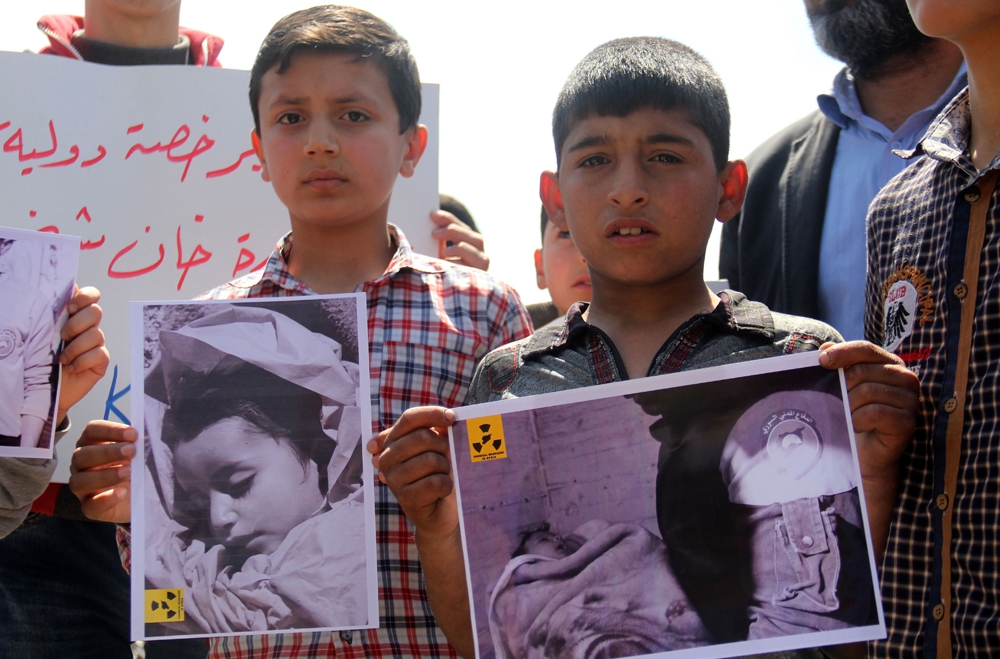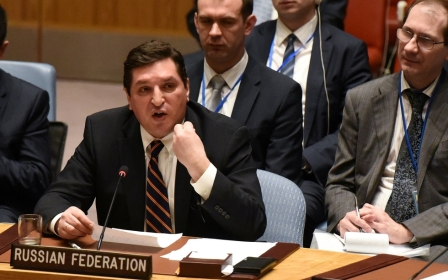US intercepted messages about chemical attack in Syria: CNN

The United States intercepted communications between Syrian military and chemical weapons experts discussing plans for a poison gas attack in Idlib province, CNN reported, citing an unidentified senior intelligence official.
The White House said in a declassified intelligence assessment that it "is confident that the Syrian regime conducted a chemical weapons attack, using the nerve agent sarin".
The US report alleges that the chemical agent was delivered by a Syrian Su-22 fixed-wing aircraft that flew over the village of Khan Sheikhun at the time of the attack, which killed at least 87 civilians, including 31 children, on 4 April.
"Additionally, our information indicates personnel historically associated with Syria's chemical weapons programme were at Shayrat airfield in late March making preparations for an upcoming attack in northern Syria, and they were present at the airfield on the day of the attack," the US government report reads.
Washington’s conclusions rely on satellite imagery, laboratory analysis of physiological samples from victims and a “significant body of open source reporting” that the report says could not have been fabricated.
While the US says not all available intelligence has been released to protect its sources and the methods, it affirms that sarin gas was released from a pipe dropped from the air.
The official stressed to CNN that Washington did not have prior knowledge of the attack, and the intercepts were processed by analysts from mass data that US intelligence collects from Iraq and Syria.
The Damascus government and its ally Russia deny responsibility for the gas attack.
On Wednesday, Moscow vetoed a UN Security Council resolution that would have asked the Syrian government to cooperate with an international investigation into the attack.
The text called on the Syrian government to provide flight plans, flight logs and other information on its military operations on 4 April as well as hand over the names of commanders of helicopter squadrons.
Middle East Eye propose une couverture et une analyse indépendantes et incomparables du Moyen-Orient, de l’Afrique du Nord et d’autres régions du monde. Pour en savoir plus sur la reprise de ce contenu et les frais qui s’appliquent, veuillez remplir ce formulaire [en anglais]. Pour en savoir plus sur MEE, cliquez ici [en anglais].




